Looking to create the perfect outdoor space but feeling overwhelmed by all the options? You’re not alone.
Choosing the right landscape style can make or break your property’s appeal. But here’s the thing – you don’t need to be a professional to get it right.
This article breaks down 10 essential landscape types that work. We’ll cover 5 natural styles that work with nature, 5 man-made designs that add structure, and real examples you can apply today.
No confusing jargon. No impossible projects. Just practical information from years of helping homeowners like you.
We’ve researched hundreds of successful landscape projects. The styles we’re sharing have proven results. They work in different climates. They fit various budgets.
Your outdoor space should reflect your lifestyle. Whether you want low-maintenance desert vibes or lush cottage gardens, we’ll help you find your match.
Ready to stop guessing and start creating?
5 Natural Types of Landscape
Nature built some incredible outdoor spaces long before humans got involved. These landscapes formed over millions of years. They’re the foundation for many of our favorite outdoor designs today.
Let me walk you through the five most important natural landscape types. You’ll see how each one offers unique benefits for your property.
1. Mountains and Hills
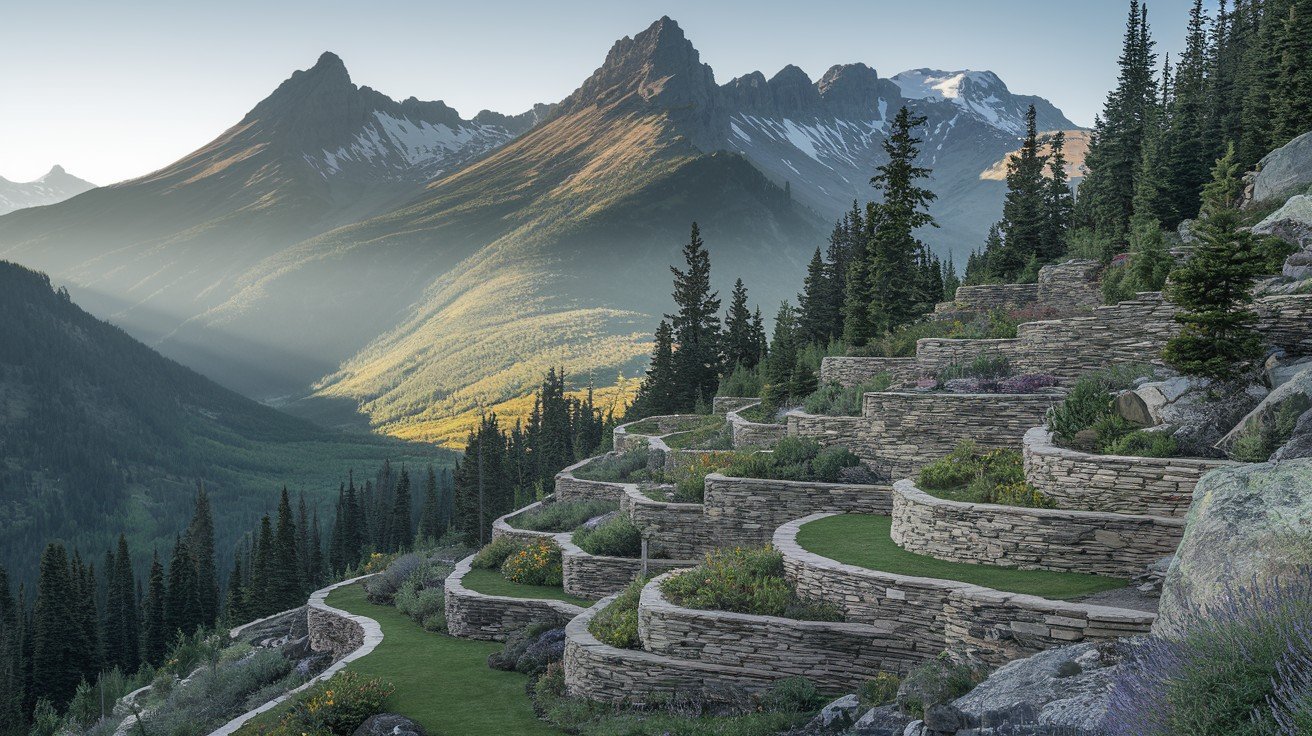
Mountains are nature’s skyscrapers. They took millions of years to form through massive underground forces pushing rock upward.
Here’s what makes mountain landscapes special. They control local weather patterns. Mountains catch rain and snow, then slowly release water to the surrounding areas. Unique plants and animals live there. You’ll find species that exist nowhere else on Earth. Glaciers often crown the highest peaks. These ice formations provide stunning visual drama.
Mountain-inspired landscaping brings that same sense of peace and grandeur to your yard. Think terraced gardens and rock features that mirror nature’s vertical drama.
2. Forests and Woodlands
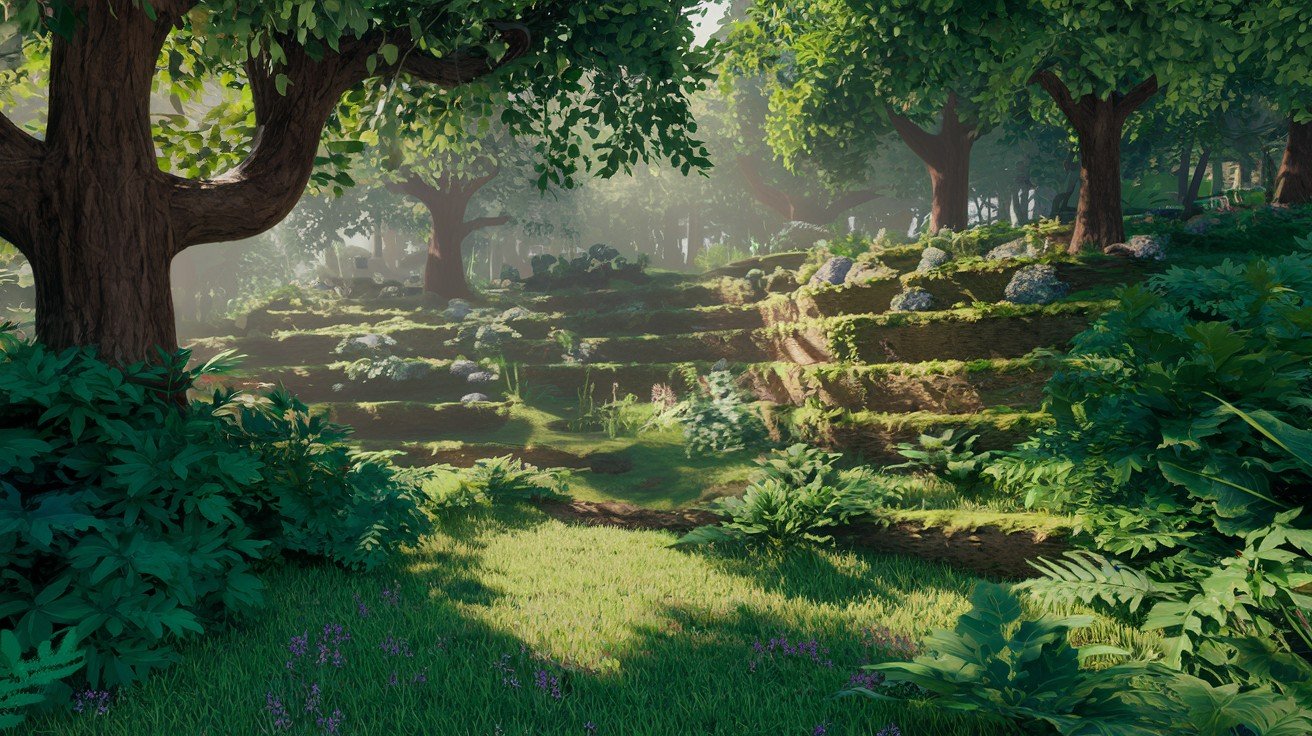
Forests cover about one-third of our planet. That’s roughly 10 billion acres of trees, shrubs, and wildlife.
But here’s what’s amazing: Forests are like giant air purifiers. They pull carbon dioxide from the atmosphere and give us clean oxygen back.
Forest landscapes offer incredible biodiversity. More species live in forests than anywhere else. Natural climate control. Trees cool the air and provide shade. Year-round beauty. Tropical rainforests stay green all year, while temperate forests change with seasons.
Want this in your yard? Build layered plantings with tall trees, medium shrubs, and ground cover plants.
3. Deserts and Arid Regions
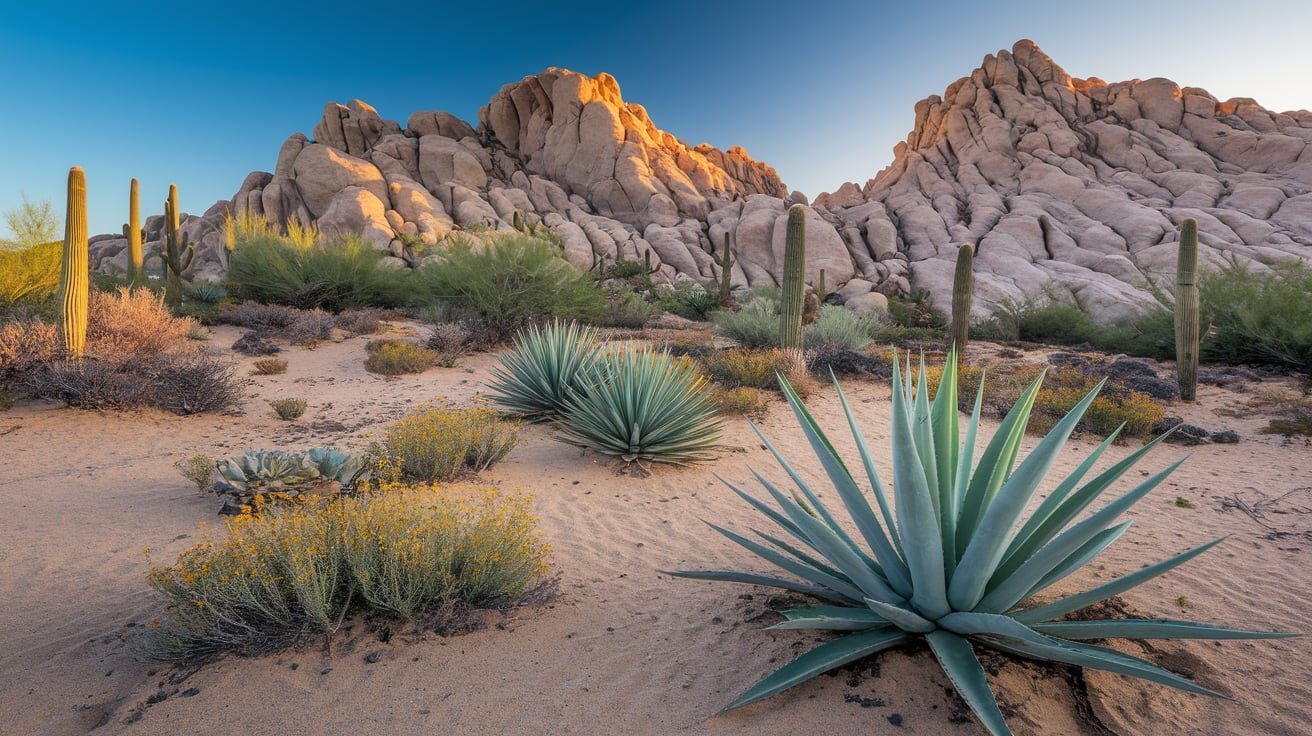
Don’t underestimate the desert. It might look empty, but it’s full of life that has learned to survive extreme conditions.
Desert landscapes feature extreme temperatures that can swing 40 degrees between day and night. Water-saving champions like cacti and succulents. Tough animals include camels, snakes, and scorpions.
Here’s the surprise: Desert landscapes are incredibly beautiful. The stark contrast between sand, rock, and occasional blooms brings drama you can’t get anywhere else.
For your property, desert-style landscaping means less watering and lower maintenance. Perfect if you travel frequently or live in dry climates.
4. Coastal and Marine Landscapes
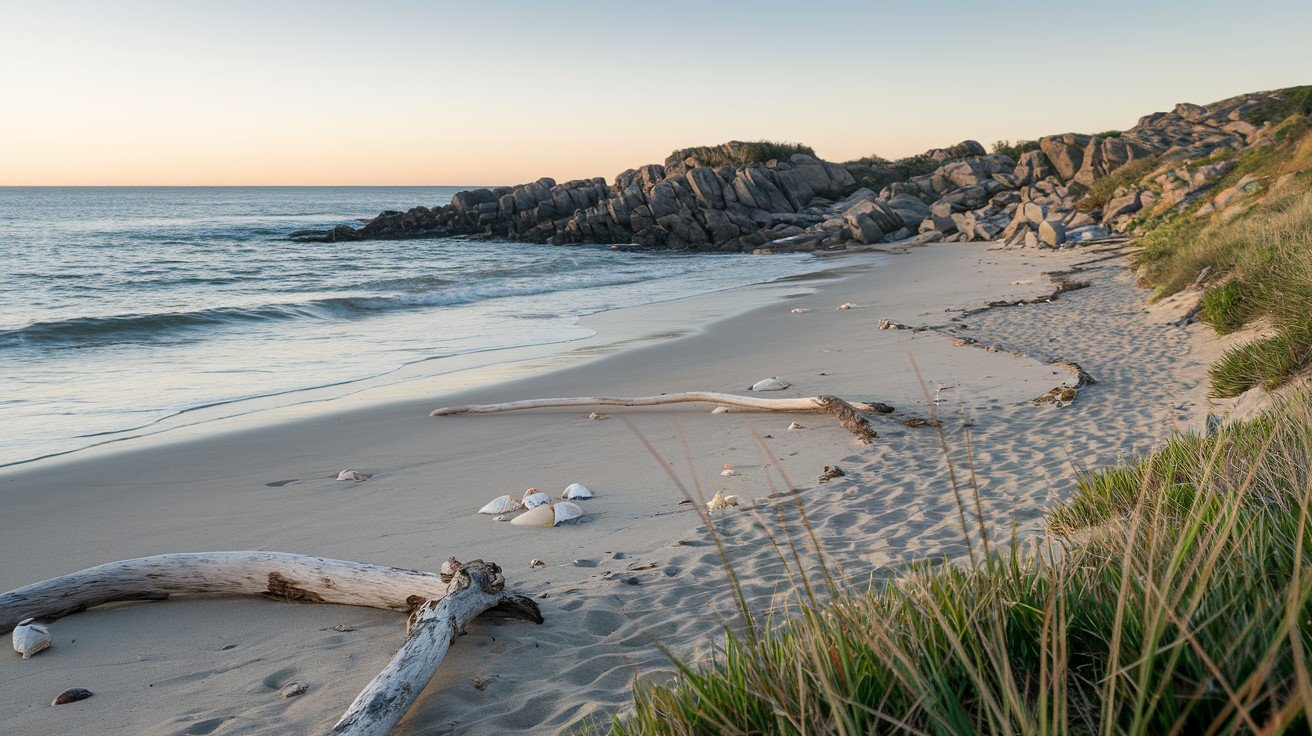
The ocean meets the land spectacularly. Wind, water, and time build everything from soft sandy beaches to dramatic rocky cliffs.
Coastal landscapes include sandy beaches formed by centuries of wave action. Rocky shorelines are carved by powerful ocean forces. Coral reefs support 25% of all marine species. Seascapes stretching to the horizon.
These areas draw millions of visitors every year. There’s something about water that relaxes us instantly.
You can capture this feeling at home with water features, sandy pathways, and coastal plants like ornamental grasses.
5. Rivers and Waterfalls
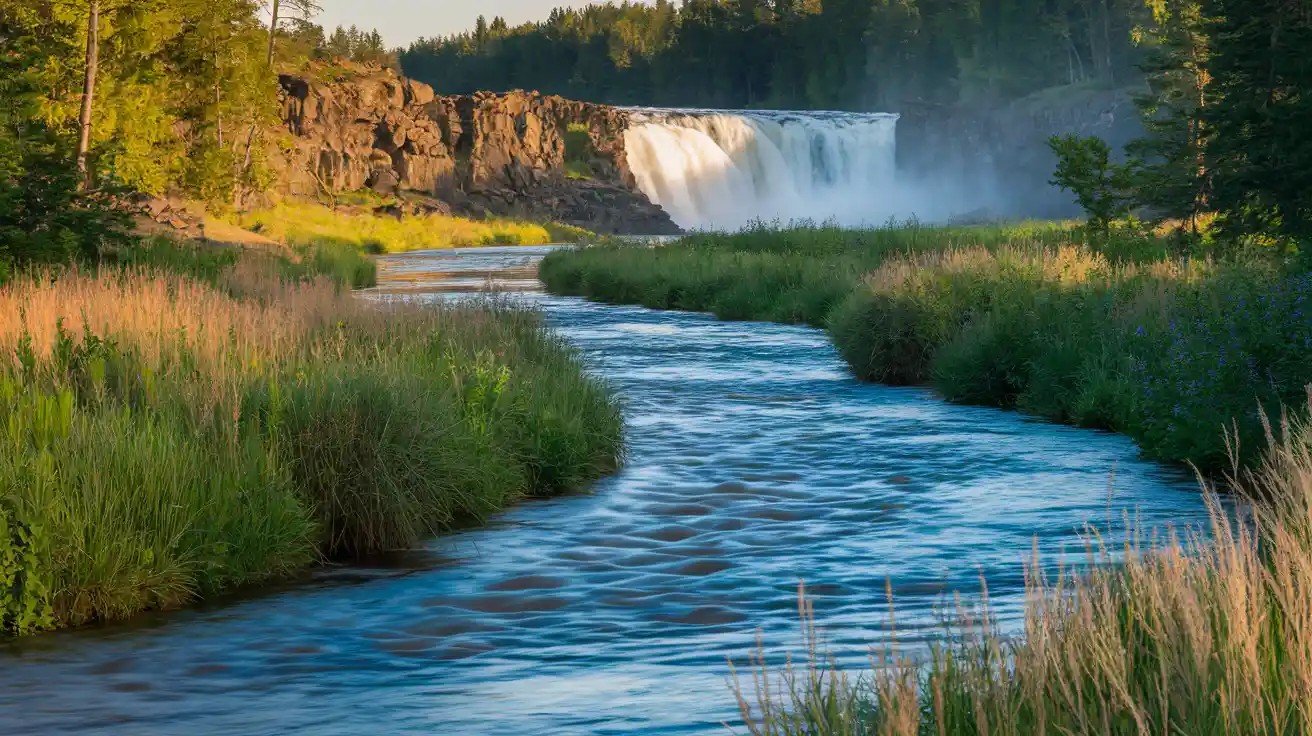
Water is life. Rivers carry fresh water across continents, supporting plants and animals along their banks.
River landscapes provide fresh water circulation that keeps ecosystems healthy. Rich soil deposits from upstream erosion. Diverse habitats for fish, birds, and amphibians. Natural beauty, especially where rivers drop into waterfalls.
The sound of moving water brings instant calm. That’s why water features are so popular in landscape design.
Rivers also connect to wetlands and marshes, building some of the most productive ecosystems on Earth.
5 Man-Made Types of Landscape
Now let’s talk about designed landscapes. These are spaces humans built with specific goals in mind. They blend natural elements with planned design.
Each style tells a different story about how we want to live outdoors.
1. Formal Gardens

Think palace gardens and grand estates. Formal gardens follow strict rules about balance and symmetry.
Key features include geometric shapes in pathways and plant beds. Matching elements on both sides of a central axis. Trimmed hedges and topiaries were shaped into perfect forms. Classical elements like fountains and statues.
This style started during the Renaissance. It’s also called the English garden style because English estates perfected the look.
Formal gardens work well if you like order and have time for regular maintenance. They bring a sense of luxury and timeless class.
2. Contemporary/Modern Gardens
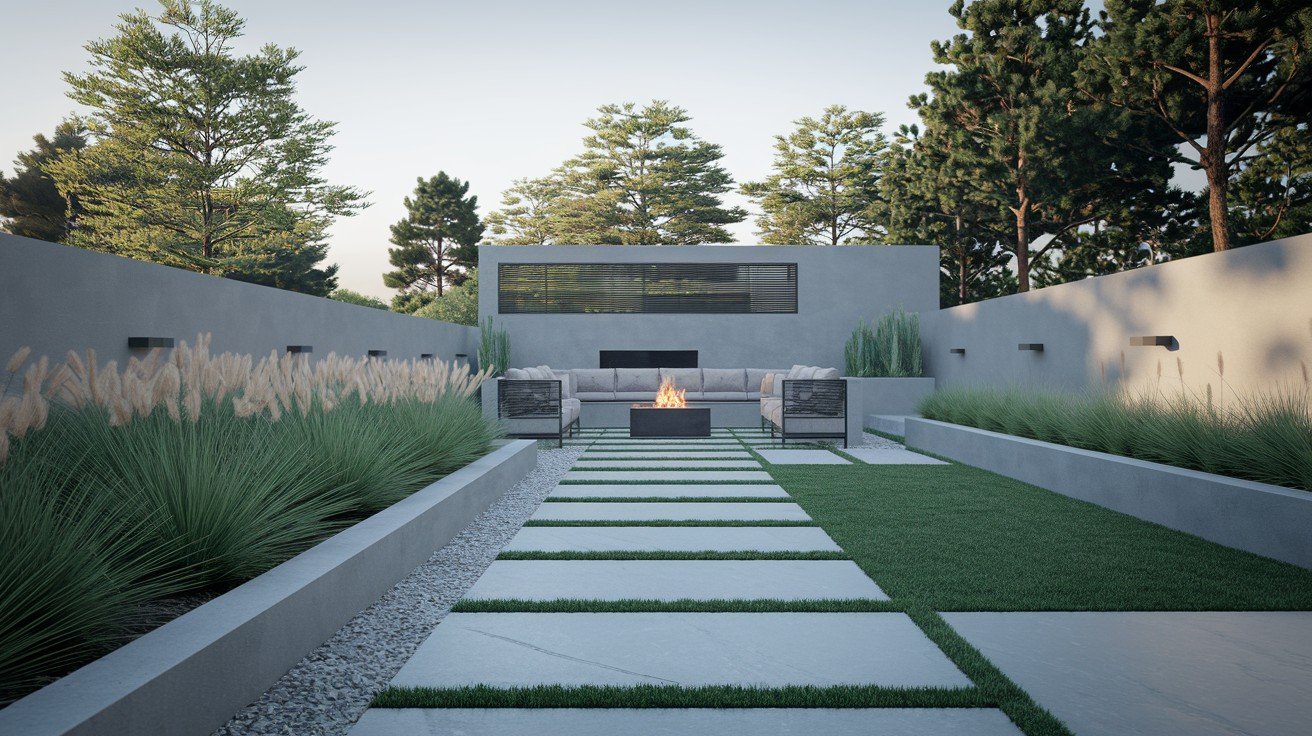
Less is more. That’s the motto of modern landscape design.
Modern gardens feature clean, straight lines instead of curves. Simple plant choices that don’t compete for attention. Mixed materials like concrete walkways with steel planters. Functional spaces are designed for actual use.
The goal? Build outdoor rooms that extend your indoor living space.
Modern landscapes work great for busy people. They look sophisticated with minimal fuss. Perfect if you want style without complicated maintenance.
3. Mediterranean Gardens
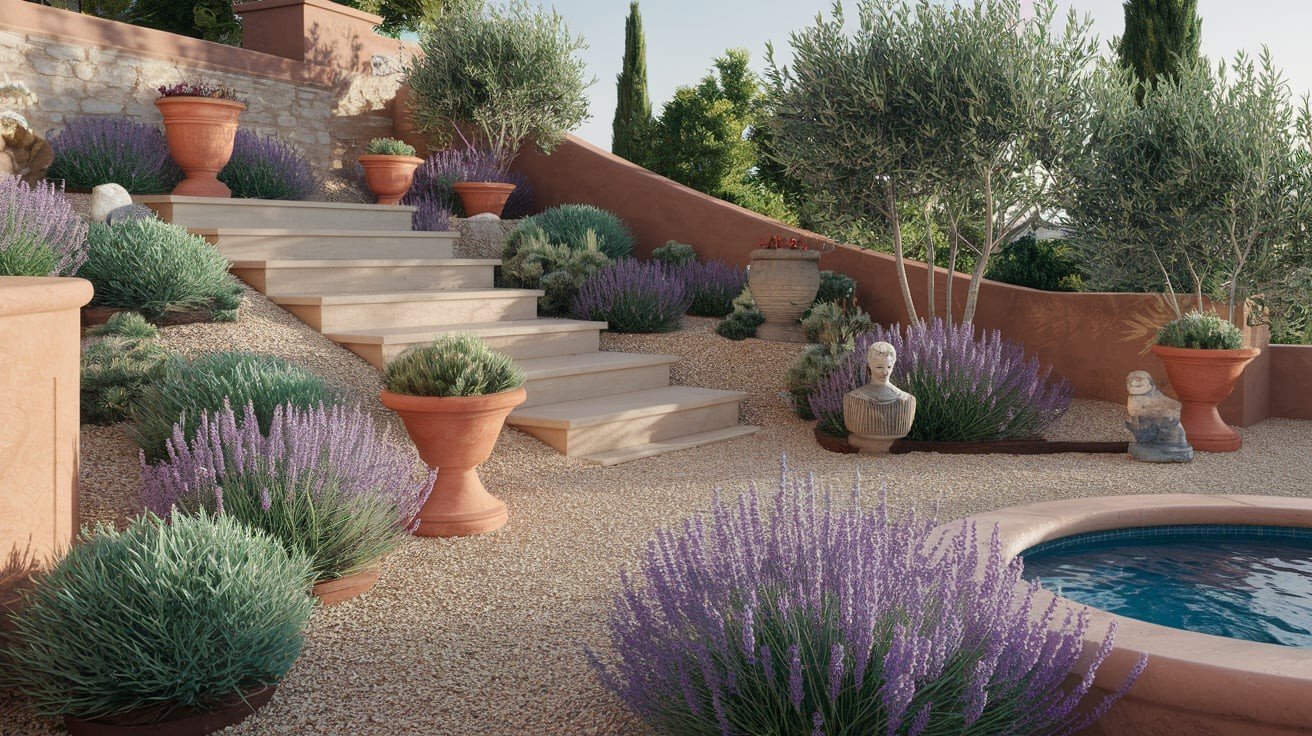
Picture the hillsides of Italy or coastal Spain. That’s the inspiration for Mediterranean landscaping.
These gardens include drought-resistant plants like lavender, olive trees, and rosemary. Terra cotta pottery and classical sculptures. Tiered fountains that make soothing water sounds. Warm color palettes featuring purples, blues, and greens.
Here’s the best part: Mediterranean plants need very little water once established. They prefer dry conditions.
This style works perfectly in hot, dry climates. You’ll save money on water bills while building a vacation-like atmosphere at home.
4. Japanese Gardens
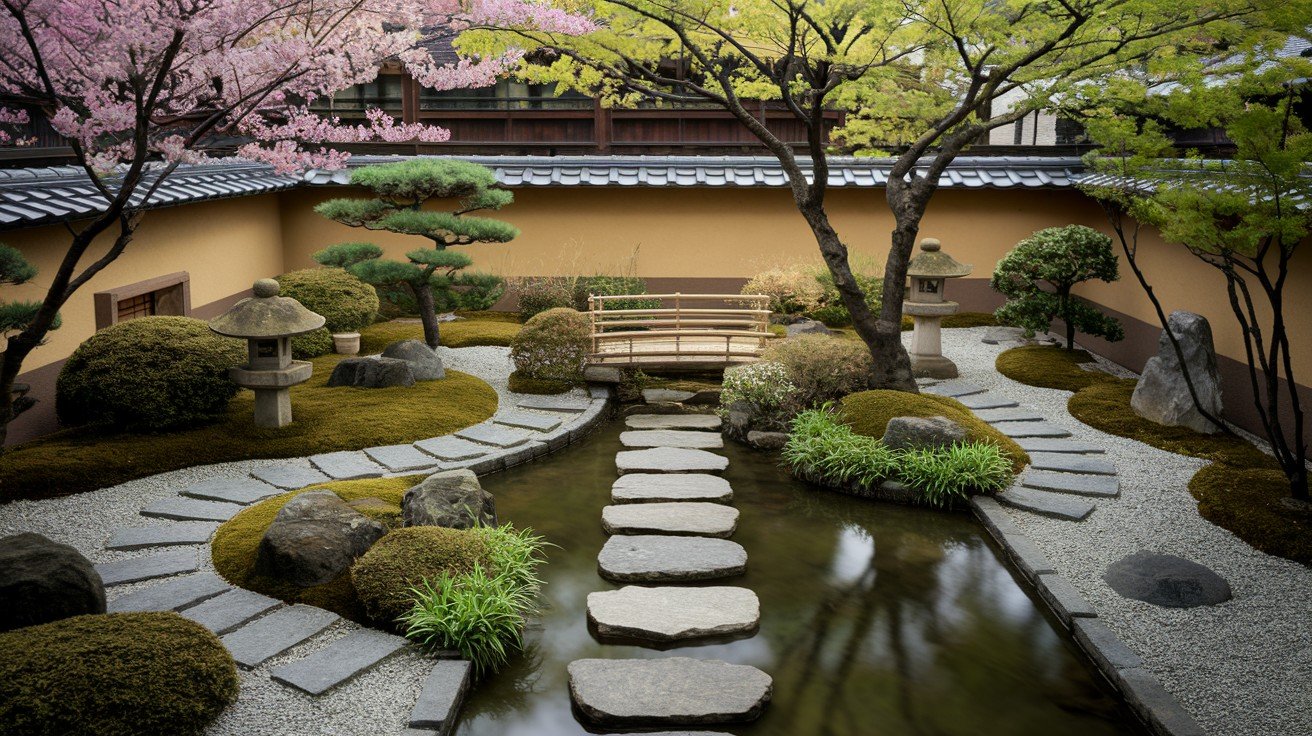
Japanese gardens are about more than plants. They’re designed to bring inner peace and connection with nature.
Traditional elements include winding pathways that slow you down and encourage mindfulness. Stepping stones across water or through plant beds. Cultural features like stone lanterns and bamboo fencing. Seasonal interest, especially cherry blossoms in spring.
The goal is harmony. Every element has meaning and purpose.
Japanese-style landscaping works well in small spaces. It brings a sense of calm that’s perfect for meditation or quiet reflection.
5. English Cottage Gardens
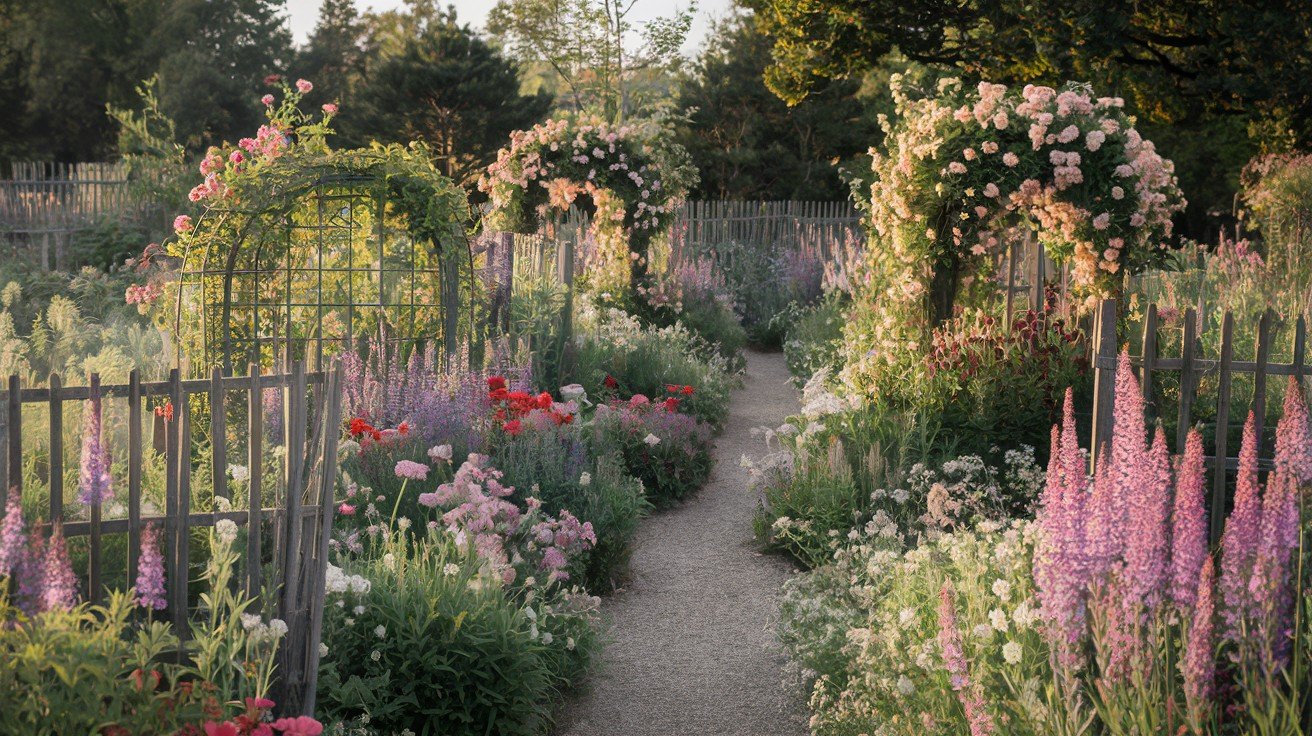
Think cozy countryside charm. English cottage gardens feel like they grew naturally over generations.
These gardens feature abundant flowers in every available space. Mixed plant heights build a full, layered look. Climbing roses on archways and fences. Informal pathways that curve and wind naturally.
The secret ingredient? Controlled chaos. Everything looks natural, but it’s carefully planned for year-round color and interest.
English cottage style works best if you love gardening and don’t mind regular care. The reward is a space that feels magical and alive.
Each of these landscape types offers something different. The trick is matching the style to your climate, maintenance preferences, and personal taste.
Conclusion
Your perfect outdoor space is within reach. We’ve walked through 10 proven landscape types that can transform any property. From natural forests and coastal designs to structured formal gardens and modern contemporary styles.
The key? Choose what fits your lifestyle and climate. Don’t force a Mediterranean garden in a rainy region or pick high-maintenance English cottage style if you travel frequently.
Start small. Pick one area of your yard. Apply the principles we’ve shared. See what works before expanding.
Remember, great landscapes take time to develop. Be patient with the process. Your plants need time to grow. Your design needs time to mature.
Every expert started as a beginner. With the right style and some basic planning, you’ll create an outdoor space that brings you joy for years to come.
What landscape type speaks to you?
Frequently Asked Questions
What’s the difference between natural and man-made landscapes?
Natural landscapes form through geological processes, while man-made landscapes are purposefully designed and constructed by humans for specific aesthetic or functional goals.
Which landscape type requires the least maintenance?
Desert and rock gardens typically require minimal maintenance due to drought-tolerant plants and reduced watering needs compared to other landscape styles.
Can I combine different landscape styles in one property?
Yes, you can blend styles by incorporating elements from different types, ensuring they complement your home’s architecture and climate conditions.
How do I choose plants for my specific landscape type?
Consider your local climate, soil conditions, sunlight exposure, and water availability when selecting plants that naturally thrive in your chosen style.
What’s the most cost-effective landscape type for beginners?
English cottage gardens and informal designs often cost less initially, using diverse, readily available plants and requiring fewer specialized materials or structures.

